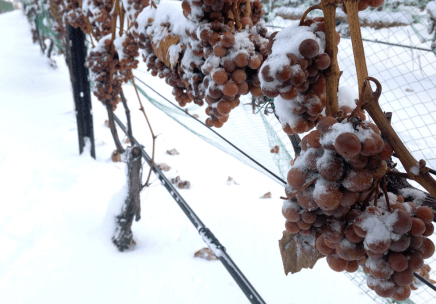A Guide to Dessert Wines
Dessert wine has been in great demand for quite a while now, and its characteristic sweetness makes it mysteriously charming. How best to take dessert wines remains a bit of a puzzle considering its high alcoholic content as well as sweetness, but one thing that has never been in doubt is its richness in taste.
While a lot of people like to refer all wines that generally accompany desserts as a dessert wine, others are of the school of thought that dessert wines can be taken alone or even with other sumptuous food. However, the United States wine industry defines the dessert wine as any wine that has alcoholic content measuring over 14% by content. This definition can be concluded to be the most definitive, and it’s safe to say fortified wines and unfortified wines fall within this class.
This article gives a useful guide to dessert wines and what to expect when you’re getting one.
Fortified Wines
These wines are produced by the addition of grape spirit before, during, or after fermentation have taken place. The method of fortification determines if the wine will be sweet or not as sugar is usually converted to alcohol during the fermentation process. When the wine is fortified during the process of fermentation, there’s a high possibility of the wine turning out sweet as there’s still unfermented sugar within the wine during that period.

However, on the flip side, when the fortification is done after fermentation, the wine is likely to be dry. That’s because all the sugar content in the mixture must have been converted to alcohol at that point. Considering the method used, there’s always a high alcoholic content in fortified wines. Two of the most popular types of fortified wines are sherry and port.
Sherry
Sherry is originally known to have originated from Jerez town in Spain. It is produced with several variations of grapes like Moscatel, Palomino Ximenez, and Palomino Fino. Natural sherry is dry, but when there’s a need to convert it to dessert wine, sweeter wines like Moscatel are added to the mix. Dessert sherry is traditionally served chilled in tulip-shaped glasses called copita in native Spain, but any wine glass should do the job.
Port
Port wines are produced using grapes, and their origin can be traced to the Douro region of Portugal. It is a characteristically red wine with a sweet taste, and it comes in different forms. There’s the tawny port, which is the well-aged form of the port that has been left in wooden barrels for air to circulate through it properly.
Tawny ports are characterized by their light brown color, which is as a result of the combination of the wine with the wooden barrels it is stored in. There’s also the ruby port, which is aged in concrete or steel tanks, to prevent air from reaching the port. Ruby port is aged for a much shorter period compared to tawny port.
Unfortified Dessert Wines
These sets of dessert wines attain sweetness through means other than a fortification. Methods employed in the production of unfortified wines include the addition of sugar to wine as well as making the grapes naturally concentrated in sugar before harvesting them.
Ice wines are a great example of unfortified wines, as are more common “sweet wines” such as the ever popular Muscat dessert wine. Although not fortified, Muscat is commonly known for sweet notes which dominate the pallet, and is often used as a lighter alternative to the more traditional fortified wines such as Port and Sherry.
Ice Wine
This unfortified wine originates from the cold regions of Germany and Austria. It’s called so because of the method employed in its preparation. Grapefruits are left on the vine for longer periods after the harvest season, extreme weather conditions then make the grape freeze, and this leads to a huge reduction in the moisture content and a simultaneous increase in its sugar content. This whole process naturally increases the sweetness of the wine. Ice wine is preferably served chill and taken with fruity desserts to fully enjoy the wine.

Other common dessert wines include Tokaji, Sauternes, Riesling, Banyuls, Marsala, Madeira and of course, Muscat. All of these wines have their distinctive features, and they are mostly named after the mode of preparation. Whatever your preference is, you can be sure of getting the perfect dessert wine that will make you yearn for more.
